| Image | Part Number | Manufacturer | Description | Series | Operating Temperature | Features | Packaging | RoHS Status | Manufacturer Part Number | Contact Finish | Voltage - Supply | Shell Style |
|---|---|---|---|---|---|---|---|---|---|---|---|---|
|
|
N57M5114VP2D10TG | AMI Semiconductor / ON Semiconductor | IC DGTL POT INTERFACE 8TDFN | - | 150°C (TJ) | - | - | - | - | - | 2.5 V ~ 6 V | - |
|
|
CAT5259WI-00-T1 | AMI Semiconductor / ON Semiconductor | IC POT DPP 100K 256TAP 24SOIC | - | -40°C ~ 85°C | Selectable Address | Tape & Reel (TR) | - | - | - | 2.5 V ~ 6 V | - |
|
|
CAT5114ZI-50-G | AMI Semiconductor / ON Semiconductor | IC DGTL POT INTERFACE 8MSOP | - | - | - | - | - | - | - | - | - |
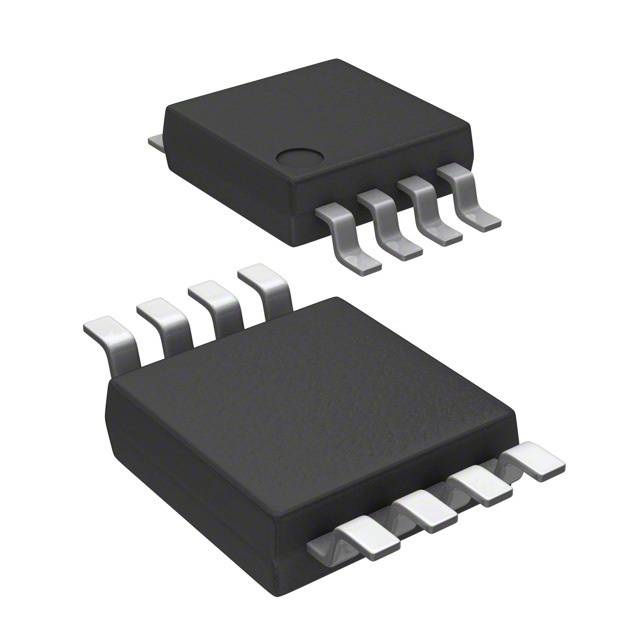
|
CAT5111ZI-50-T3 | AMI Semiconductor / ON Semiconductor | IC POT DGTL 50K 100TAP 8MSOP | - | -40°C ~ 85°C | - | Tape & Reel (TR) | - | - | - | 2.5 V ~ 6 V | - |
|
|
CAT5112VI-10-GT3 | AMI Semiconductor / ON Semiconductor | IC POT DGTL 10K 32TAP 8SOIC | - | -40°C ~ 85°C | - | Tape & Reel (TR) | - | - | - | 2.5 V ~ 6 V | - |
|
|
CAT5113YI-50-GT3 | AMI Semiconductor / ON Semiconductor | IC POT DIGITL 50K 100TAP 8TSSOP | - | -40°C ~ 85°C | - | Tape & Reel (TR) | - | - | - | 2.5 V ~ 6 V | - |
|
|
CAT5136SDI-50GT3 | AMI Semiconductor / ON Semiconductor | IC DPP I2C 128TAP VOL SC70-6 | - | -40°C ~ 85°C | - | Tape & Reel (TR) | - | - | - | 2.5 V ~ 5.5 V | - |
|
|
CAT5110TBI-50GT3 | AMI Semiconductor / ON Semiconductor | IC POT DGTL 50K 32TAP SOT23-6 | - | -40°C ~ 85°C | - | Tape & Reel (TR) | - | - | - | 2.7 V ~ 5.5 V | - |

|
CAT5127ZI-50-GT3 | AMI Semiconductor / ON Semiconductor | IC POT DPP 3 WIRE LINEAR 8-MSOP | - | -40°C ~ 85°C | - | Tape & Reel (TR) | - | - | - | 2.5 V ~ 5.5 V | - |
|
|
CAT5121TBI-50-T3 | AMI Semiconductor / ON Semiconductor | IC DGTL POT INTERFACE SOT-23 | - | - | - | - | - | - | - | - | - |
|
|
CAT5111YI-10-GT3 | AMI Semiconductor / ON Semiconductor | IC POT DGTL 10K 100TAP 8TSSOP | - | -40°C ~ 85°C | - | Tape & Reel (TR) | - | - | - | 2.5 V ~ 6 V | - |
|
|
CAT5401YI-25-T2 | AMI Semiconductor / ON Semiconductor | IC POT DPP QUAD 64TAP SPI 24TSSO | - | -40°C ~ 85°C | Selectable Address | Tape & Reel (TR) | - | - | - | 2.5 V ~ 6 V | - |
|
|
CAT5112ZI50 | AMI Semiconductor / ON Semiconductor | IC DGTL POT INTERFACE 8MSOP | - | - | - | - | - | - | - | - | - |
|
|
CAT5259YI-50-T2 | AMI Semiconductor / ON Semiconductor | IC POT DPP 50K 256TAP 24TSSOP | - | -40°C ~ 85°C | Selectable Address | Tape & Reel (TR) | - | - | - | 2.5 V ~ 6 V | - |
|
|
CAT5112VI10 | AMI Semiconductor / ON Semiconductor | IC DGTL POT INTERFACE 8SOIC | - | - | - | - | - | - | - | - | - |
|
|
CAT5137SDI-00GT3 | AMI Semiconductor / ON Semiconductor | IC DPP I2C 128TAP VOL SC70-6 | - | -40°C ~ 85°C | - | Tape & Reel (TR) | - | - | - | 2.7 V ~ 5.5 V | - |

|
CAT5122TBI-50GT3 | AMI Semiconductor / ON Semiconductor | IC POT DPP 16TAP U/D SOT23-5 | - | -40°C ~ 85°C | - | Tape & Reel (TR) | - | - | - | 2.7 V ~ 5.5 V | - |
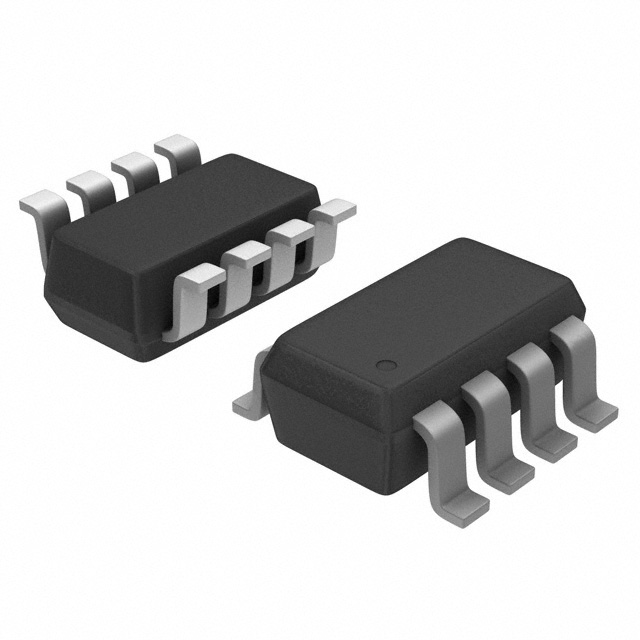
|
CAT5128TBI-50GT3 | AMI Semiconductor / ON Semiconductor | IC POT DPP 32TAP U/D SOT23-8 | - | -40°C ~ 85°C | - | Tape & Reel (TR) | - | - | - | 2.5 V ~ 5.5 V | - |
|
|
CAT5112VI-50-T3 | AMI Semiconductor / ON Semiconductor | IC DGTL POT INTERFACE 8SOIC | - | - | - | - | - | - | - | - | - |
|
|
CAT5113VI-50-T3 | AMI Semiconductor / ON Semiconductor | IC DGTL POT INTERFACE 8SOIC | - | - | - | - | - | - | - | - | - |
|
|
CAT5259WI-50-T1 | AMI Semiconductor / ON Semiconductor | IC POT DPP 50K 256TAP 24SOIC | - | -40°C ~ 85°C | Selectable Address | Tape & Reel (TR) | - | - | - | 2.5 V ~ 6 V | - |

|
CAT5114ZI-00-GT3 | AMI Semiconductor / ON Semiconductor | IC POT DPP NV 32TAP U/D 8MSOP | - | -40°C ~ 85°C | - | Tape & Reel (TR) | - | - | - | 2.5 V ~ 6 V | - |
|
|
CAT5221YI-50-T2 | AMI Semiconductor / ON Semiconductor | IC POT DPP 50K 64TAP 20TSSOP | - | -40°C ~ 85°C | Selectable Address | Tape & Reel (TR) | - | - | - | 2.5 V ~ 6 V | - |

|
CAT5118TBI-10-T3 | AMI Semiconductor / ON Semiconductor | IC POT DPP 32TAP U/D SOT23-5 | - | -40°C ~ 85°C | - | Tape & Reel (TR) | - | - | - | 2.7 V ~ 5.5 V | - |

|
CAT5114ZI-10-T3 | AMI Semiconductor / ON Semiconductor | IC POT DPP NV 32TAP U/D 8MSOP | - | -40°C ~ 85°C | - | Tape & Reel (TR) | - | - | - | 2.5 V ~ 6 V | - |
|
|
CAT5111YI-10-T3 | AMI Semiconductor / ON Semiconductor | IC DGTL POT INTERFACE 8TSSOP | - | - | - | - | - | - | - | - | - |
|
|
N57M5114YD10TG | AMI Semiconductor / ON Semiconductor | IC DGTL POT INTERFACE 8TSSOP | - | 150°C (TJ) | - | - | - | - | - | 2.5 V ~ 6 V | - |
|
|
CAT5113LI-50-G | AMI Semiconductor / ON Semiconductor | IC POT DIGITL 50K 100TAP 8DIP | - | -40°C ~ 85°C | - | Tube | - | - | - | 2.5 V ~ 6 V | - |
|
|
CAT5110TBI-50-T3 | AMI Semiconductor / ON Semiconductor | IC POT DIGITL 50K 32TAP SOT23-6 | - | -40°C ~ 85°C | - | Tape & Reel (TR) | - | - | - | 2.7 V ~ 5.5 V | - |
|
|
CAT5221YI00 | AMI Semiconductor / ON Semiconductor | IC DGTL POT INTERFACE 20TSSOP | - | - | - | - | - | - | - | - | - |
|
|
CAT5112VI-10-T3 | AMI Semiconductor / ON Semiconductor | IC POT DIGITL 10K 32TAP 8SOIC | - | -40°C ~ 85°C | - | Original-Reel® | - | - | - | 2.5 V ~ 6 V | - |
|
|
CAT5259YI-00-T2 | AMI Semiconductor / ON Semiconductor | IC POT DPP 100K 256TAP 24TSSOP | - | -40°C ~ 85°C | Selectable Address | Tape & Reel (TR) | - | - | - | 2.5 V ~ 6 V | - |
|
|
CAT5411YI-00-T2 | AMI Semiconductor / ON Semiconductor | IC POT DPP 100K 64TAP 24TSSOP | - | -40°C ~ 85°C | Selectable Address | Tape & Reel (TR) | - | - | - | 2.5 V ~ 6 V | - |

|
CAT5140ZI-50-GT3 | AMI Semiconductor / ON Semiconductor | IC POT DPP NV 256TAP I2C 8MSOP | - | -40°C ~ 85°C | - | Tape & Reel (TR) | - | - | - | 2.5 V ~ 5.5 V | - |
|
|
CAT5115ZI-10-T3 | AMI Semiconductor / ON Semiconductor | IC DGTL POT INTERFACE 8MSOP | - | - | - | - | - | - | - | - | - |
|
|
CAT5112YI-10-T3 | AMI Semiconductor / ON Semiconductor | IC DGTL POT INTERFACE 8TSSOP | - | - | - | - | - | - | - | - | - |
|
|
CAT5112VI-10-G | AMI Semiconductor / ON Semiconductor | IC DGTL POT INTERFACE 8SOIC | - | - | - | - | - | - | - | - | - |
|
|
CAT5121TBI-50GT3 | AMI Semiconductor / ON Semiconductor | IC POT DPP 16TAP U/D SOT23-6 | - | -40°C ~ 85°C | - | Tape & Reel (TR) | - | - | - | 2.7 V ~ 5.5 V | - |
|
|
CAT5111YI-00-T3 | AMI Semiconductor / ON Semiconductor | IC DGTL POT INTERFACE 8TSSOP | - | - | - | - | - | - | - | - | - |
|
|
CAT5119SDI-10GT3 | AMI Semiconductor / ON Semiconductor | IC POT DPP 32TAP U/D SC70-6 | - | -40°C ~ 85°C | - | Tape & Reel (TR) | - | - | - | 2.7 V ~ 5.5 V | - |
|
|
N57M5114WD10TG | AMI Semiconductor / ON Semiconductor | IC DGTL POT INTERFACE 8SOIC | - | 150°C (TJ) | - | - | - | - | - | 2.5 V ~ 6 V | - |
|
|
CAT5409WI-00-T1 | AMI Semiconductor / ON Semiconductor | IC POT DPP QUAD 64TAP I2C 24SOIC | - | -40°C ~ 85°C | Selectable Address | Tape & Reel (TR) | - | - | - | 2.5 V ~ 6 V | - |
|
|
CAT5401WI-10-T1 | AMI Semiconductor / ON Semiconductor | IC POT DIGI 4CH 64TAP 10K 24SOIC | - | -40°C ~ 85°C | Selectable Address | Original-Reel® | - | - | - | 2.5 V ~ 6 V | - |
|
|
CAT5411WI-10-T1 | AMI Semiconductor / ON Semiconductor | IC POT DIGI 2CH 64TAP 10K 24SOIC | - | -40°C ~ 85°C | Selectable Address | Cut Tape (CT) | - | - | - | 2.5 V ~ 6 V | - |
|
|
CAT5251WI-50-T1 | AMI Semiconductor / ON Semiconductor | IC POT DPP 50K 256TAP 24SOIC | - | -40°C ~ 85°C | - | Tape & Reel (TR) | - | - | - | 2.5 V ~ 6 V | - |

|
CAT5111ZI10 | AMI Semiconductor / ON Semiconductor | IC POT DGTL 10K 100-TAP 8-MSOP | - | -40°C ~ 85°C | - | Tube | - | - | - | 2.5 V ~ 6 V | - |
|
|
N57L5128TBD00TG | AMI Semiconductor / ON Semiconductor | IC DGTL POT INTERFACE SOT23-8 | - | - | - | - | - | - | - | - | - |
|
|
CAT5419WI-50-T1 | AMI Semiconductor / ON Semiconductor | IC POT DPP 50K 64TAP 24SOIC | - | -40°C ~ 85°C | Selectable Address | Tape & Reel (TR) | - | - | - | 2.5 V ~ 6 V | - |
|
|
CAT5409YI-25-T2 | AMI Semiconductor / ON Semiconductor | IC POT DPP QUAD 64TAP I2C 24TSSO | - | -40°C ~ 85°C | Selectable Address | Tape & Reel (TR) | - | - | - | 2.5 V ~ 6 V | - |
|
|
CAT5221YI50 | AMI Semiconductor / ON Semiconductor | IC DGTL POT INTERFACE 20TSSOP | - | - | - | - | - | - | - | - | - |

|
CAT5112ZI-50-GT3 | AMI Semiconductor / ON Semiconductor | IC POT DGTL 50K 32TAP 8MSOP | - | -40°C ~ 85°C | - | Tape & Reel (TR) | - | - | - | 2.5 V ~ 6 V | - |
|
|
CAT5419YI25 | AMI Semiconductor / ON Semiconductor | IC DGTL POT INTERFACE 24TSSOP | - | - | - | - | - | - | - | - | - |
|
|
CAT5114VI-00-GT3 | AMI Semiconductor / ON Semiconductor | IC POT DPP NV 32TAP U/D 8SOIC | - | -40°C ~ 85°C | - | Tape & Reel (TR) | - | - | - | 2.5 V ~ 6 V | - |
|
|
CAT5113YI-01-T3 | AMI Semiconductor / ON Semiconductor | IC DGTL POT INTERFACE 8TSSOP | - | - | - | - | - | - | - | - | - |
|
|
CAT5113YI-00-G | AMI Semiconductor / ON Semiconductor | IC POT DIGITL 100K 100TAP 8TSSOP | - | -40°C ~ 85°C | - | Tube | - | - | - | 2.5 V ~ 6 V | - |
|
|
CAT5122SDI-50GT3 | AMI Semiconductor / ON Semiconductor | IC POT DPP 16TAP U/D SC70-6 | - | -40°C ~ 85°C | - | Tape & Reel (TR) | - | - | - | 2.7 V ~ 5.5 V | - |
|
|
CAT5113LI-10-G | AMI Semiconductor / ON Semiconductor | IC POT DIGITL 10K 100TAP 8DIP | - | -40°C ~ 85°C | - | Tube | - | - | - | 2.5 V ~ 6 V | - |

|
AD5259BRMZ50-R7 | ADI (Analog Devices, Inc.) | IC POT DGTL 50K 256POS 10MSOP | - | -40°C ~ 125°C | Selectable Address | Tape & Reel (TR) | - | - | - | 2.7 V ~ 5.5 V | - |

|
AD5228BUJZ50-R2 | ADI (Analog Devices, Inc.) | IC DGTL POT 50K UP/DN TSOT23-8 | - | -40°C ~ 105°C | - | Cut Tape (CT) | - | - | - | 2.7 V ~ 5.5 V | - |

|
AD5220BRZ10 | ADI (Analog Devices, Inc.) | IC POT DGTL 10K 128POS 8-SOIC | - | -40°C ~ 85°C | - | Tube | - | - | - | 2.7 V ~ 5.5 V | - |

|
AD8403AR100-REEL | ADI (Analog Devices, Inc.) | IC POT DIG QUAD 100K 8BIT 24SOIC | - | -40°C ~ 125°C | Cascade Pin | Tape & Reel (TR) | - | - | - | 2.7 V ~ 5.5 V | - |

|
AD8402ARZ100 | ADI (Analog Devices, Inc.) | IC POT DIG DUAL 100K 8BIT 14SOIC | - | -40°C ~ 125°C | - | Tube | - | - | - | 2.7 V ~ 5.5 V | - |

|
AD5111BCPZ10-RL7 | ADI (Analog Devices, Inc.) | IC DGTL POT 128POS 10K 8LFCSP | - | -40°C ~ 125°C | - | Tape & Reel (TR) | - | - | - | 2.3 V ~ 5.5 V | - |

|
AD5142ABCPZ100-RL7 | ADI (Analog Devices, Inc.) | IC DGTL POT 256POS 100K 16LFCSP | - | -40°C ~ 125°C | Selectable Address | Cut Tape (CT) | - | - | - | 2.3 V ~ 5.5 V, ±2.25 V ~ 2.75 V | - |

|
AD5248BRM2.5 | ADI (Analog Devices, Inc.) | IC DGTL POT DUAL 2.5K I2C 10MSOP | - | -40°C ~ 125°C | Selectable Address | Tube | - | - | - | 2.7 V ~ 5.5 V | - |

|
AD8403ARU100-REEL | ADI (Analog Devices, Inc.) | IC POT DIG QUAD 100K 8B 24TSSOP | - | -40°C ~ 125°C | Cascade Pin | Tape & Reel (TR) | - | - | - | 2.7 V ~ 5.5 V | - |

|
AD5291BRUZ-20 | ADI (Analog Devices, Inc.) | IC POT DIG 256P SPI 20K 14TSSOP | - | -40°C ~ 105°C | Cascade Pin | Tube | - | - | - | 9 V ~ 33 V, ±9 V ~ 16.5 V | - |

|
AD5251BRUZ50 | ADI (Analog Devices, Inc.) | IC POT DGTL DUAL 50K 64P 14TSSOP | - | -40°C ~ 105°C | Selectable Address | Tube | - | - | - | 2.7 V ~ 5.5 V, ±2.25 V ~ 2.75 V | - |

|
AD5247BKSZ100-1RL7 | ADI (Analog Devices, Inc.) | IC POT DGTL 100K 128POS SC70-6 | - | -40°C ~ 125°C | - | Tape & Reel (TR) | - | - | - | 2.7 V ~ 5.5 V | - |

|
AD5144ABRUZ100 | ADI (Analog Devices, Inc.) | IC DGTL POT 100K 4CH 20-TSSOP | - | -40°C ~ 125°C | Selectable Address | Tube | - | - | - | 2.3 V ~ 5.5 V, ±2.25 V ~ 2.75 V | - |

|
AD5243BRMZ100 | ADI (Analog Devices, Inc.) | IC DGTL POT DUAL 100K I2C 10MSOP | - | -40°C ~ 125°C | - | Tube | - | - | - | 2.7 V ~ 5.5 V | - |

|
AD5161BRM5-RL7 | ADI (Analog Devices, Inc.) | IC DGTL POT SPI 256POS 10-MSOP | - | -40°C ~ 125°C | Cascade Pin, Selectable Address | Tape & Reel (TR) | - | - | - | 2.7 V ~ 5.5 V | - |
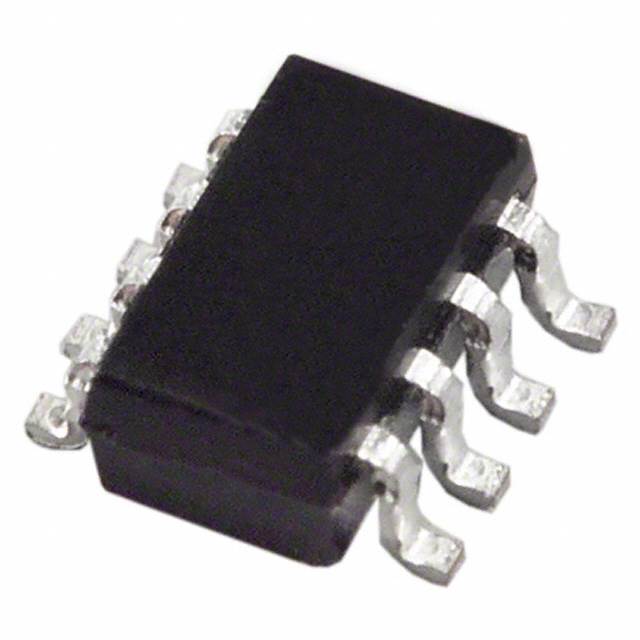
|
AD5160BRJZ10-RL7 | ADI (Analog Devices, Inc.) | IC POT DGTL SPI 256POS SOT23-8 | - | -40°C ~ 125°C | - | Tape & Reel (TR) | - | - | - | 2.7 V ~ 5.5 V | - |

|
AD5252BRUZ1 | ADI (Analog Devices, Inc.) | IC DGTL POT DUAL 1K I2C 14-TSSOP | - | -40°C ~ 105°C | Selectable Address | Tube | - | - | - | 2.7 V ~ 5.5 V, ±2.25 V ~ 2.75 V | - |

|
AD5235BRUZ25-EP-R7 | ADI (Analog Devices, Inc.) | IC DGTL POT 1024POS DUAL 16TSSOP | - | - | - | - | - | - | - | - | - |

|
AD5270BCPZ-100-RL7 | ADI (Analog Devices, Inc.) | IC RHEOSTAT 5V 50-TP 1024 10CSP | - | -40°C ~ 125°C | Cascade Pin | Tape & Reel (TR) | - | - | - | 2.7 V ~ 5.5 V, ±2.5 V ~ 2.75 V | - |

|
AD5245BRJZ50-R2 | ADI (Analog Devices, Inc.) | IC DGTL POT 256POS SOT23-8 | - | -40°C ~ 125°C | Selectable Address | Cut Tape (CT) | - | - | - | 2.7 V ~ 5.5 V | - |

|
AD5160BRJZ100-R2 | ADI (Analog Devices, Inc.) | IC DGTL POT 100K SPI SOT23-8 | - | -40°C ~ 125°C | - | Cut Tape (CT) | - | - | - | 2.7 V ~ 5.5 V | - |

|
AD5246BKSZ5-RL7 | ADI (Analog Devices, Inc.) | IC DGTL RES 128POS SC70-6 | - | -40°C ~ 125°C | - | Cut Tape (CT) | - | - | - | 2.7 V ~ 5.5 V | - |

|
AD5172BRM10-RL7 | ADI (Analog Devices, Inc.) | IC DGTL POT DUAL OTP 10-MSOP | - | -40°C ~ 125°C | - | Tape & Reel (TR) | - | - | - | 2.7 V ~ 5.5 V | - |

|
AD5248BRMZ2.5 | ADI (Analog Devices, Inc.) | IC DGTL POT DUAL 2.5K I2C 10MSOP | - | -40°C ~ 125°C | Selectable Address | Tube | - | - | - | 2.7 V ~ 5.5 V | - |

|
AD5206BRUZ100 | ADI (Analog Devices, Inc.) | IC DGTL POT 6CH 256POS 24-TSSOP | - | -40°C ~ 85°C | Selectable Address | Tube | - | - | - | 2.7 V ~ 5.5 V, ±2.3 V ~ 2.7 V | - |
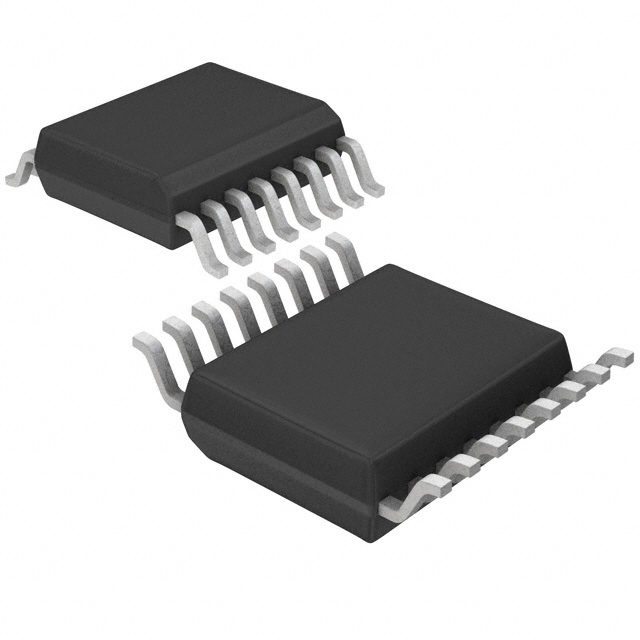
|
AD5262BRUZ200-RL7 | ADI (Analog Devices, Inc.) | IC POT DUAL 200K 256POS 16TSSOP | - | -40°C ~ 85°C | Cascade Pin | Tape & Reel (TR) | - | - | - | 4.5 V ~ 16.5 V, ±5V | - |

|
AD5241BRZ1M-REEL | ADI (Analog Devices, Inc.) | IC DIGITAL POT 256POS 14SOIC | - | -40°C ~ 105°C | Selectable Address | Tape & Reel (TR) | - | - | - | 2.7 V ~ 5.5 V, ±2.3 V ~ 2.7 V | - |

|
AD8402ARU100-REEL | ADI (Analog Devices, Inc.) | IC POT DIG DUAL 100K 8B 14TSSOP | - | -40°C ~ 125°C | - | Tape & Reel (TR) | - | - | - | 2.7 V ~ 5.5 V | - |

|
AD7376ARUZ10-R7 | ADI (Analog Devices, Inc.) | IC DIGITAL POT 10K 14-TSSOP | - | -40°C ~ 85°C | Cascade Pin | Tape & Reel (TR) | - | - | - | 4.5 V ~ 33 V, ±4.5 V ~ 16.5 V | - |

|
AD5160BRJ100-R2 | ADI (Analog Devices, Inc.) | IC POT DGTL 100K 256POS SOT23-8 | - | -40°C ~ 125°C | - | Cut Tape (CT) | - | - | - | 2.7 V ~ 5.5 V | - |

|
AD5170BRM10 | ADI (Analog Devices, Inc.) | IC DGTL POT 10K 256POS 10-MSOP | - | -40°C ~ 125°C | Selectable Address | Tube | - | - | - | 2.7 V ~ 5.5 V | - |

|
AD5259BCPZ100-R7 | ADI (Analog Devices, Inc.) | IC POT DGTL 100K 256POS 10LFCSP | - | -40°C ~ 125°C | Selectable Address | Cut Tape (CT) | - | - | - | 2.7 V ~ 5.5 V | - |

|
AD5124BCPZ100-RL7 | ADI (Analog Devices, Inc.) | IC DGTL POT 128POS 100K 24LFCSP | - | -40°C ~ 125°C | Cascade Pin, Selectable Address | Tape & Reel (TR) | - | - | - | 2.3 V ~ 5.5 V, ±2.25 V ~ 2.75 V | - |

|
AD5172BRMZ100-RL7 | ADI (Analog Devices, Inc.) | IC DGTL POT DUAL 100K I2C 10MSOP | - | -40°C ~ 125°C | - | Tape & Reel (TR) | - | - | - | 2.7 V ~ 5.5 V | - |

|
AD5170BRMZ2.5 | ADI (Analog Devices, Inc.) | IC POT DGTL 2.5K 256POS 10-MSOP | - | -40°C ~ 125°C | Selectable Address | Tube | - | - | - | 2.7 V ~ 5.5 V | - |

|
AD5200BRMZ10 | ADI (Analog Devices, Inc.) | IC POT DGTL 10K 256POS 10MSOP | - | -40°C ~ 85°C | - | Tube | - | - | - | 2.7 V ~ 5.5 V, ±2.3 V ~ 2.7 V | - |

|
AD5110BCPZ80-500R7 | ADI (Analog Devices, Inc.) | IC DGTL POT 128POS 80K 8LFCSP | - | -40°C ~ 125°C | - | Tape & Reel (TR) | - | - | - | 1.8 V ~ 5.5 V, 2.3 V ~ 5.5 V | - |

|
AD5162BRMZ50 | ADI (Analog Devices, Inc.) | IC POT DGTL DUAL 256POS 10-MSOP | - | -40°C ~ 125°C | - | Tube | - | - | - | 2.7 V ~ 5.5 V | - |

|
AD5259BRMZ10-R7 | ADI (Analog Devices, Inc.) | IC POT DGTL 10K 256POS 10MSOP | - | -40°C ~ 125°C | Selectable Address | Tape & Reel (TR) | - | - | - | 2.7 V ~ 5.5 V | - |

|
AD5241BRZ100 | ADI (Analog Devices, Inc.) | IC DGTL POT 256POS 100K 14SOIC | - | -40°C ~ 105°C | Selectable Address | Tube | - | - | - | 2.7 V ~ 5.5 V, ±2.3 V ~ 2.7 V | - |

|
AD8400ARZ50 | ADI (Analog Devices, Inc.) | IC POT DGTL 8BIT SGL 50K 8-SOIC | - | -40°C ~ 125°C | - | Tube | - | - | - | 2.7 V ~ 5.5 V | - |

|
AD8403ARUZ50 | ADI (Analog Devices, Inc.) | IC POT DIG QUAD 50K 8BIT 24TSSOP | - | -40°C ~ 125°C | Cascade Pin | Tube | - | - | - | 2.7 V ~ 5.5 V | - |

|
AD5142ABRUZ10 | ADI (Analog Devices, Inc.) | IC DGTL POT 10K 2CH 16-TSSOP | - | -40°C ~ 125°C | Selectable Address | Tube | - | - | - | 2.3 V ~ 5.5 V, ±2.25 V ~ 2.75 V | - |

|
AD5220BRZ10-REEL | ADI (Analog Devices, Inc.) | IC POT DGTL 10K 128POS 8SOIC | - | -40°C ~ 85°C | - | Tape & Reel (TR) | - | - | - | 2.7 V ~ 5.5 V | - |

|
AD5222BRUZ10 | ADI (Analog Devices, Inc.) | IC POT DGTL DUAL 128POS 14TSSOP | - | -40°C ~ 85°C | - | Tube | - | - | - | 2.7 V ~ 5.5 V, ±2.3 V ~ 2.7 V | - |

|
AD8402ARZ50-REEL | ADI (Analog Devices, Inc.) | IC POT DIG DUAL 50K 8BIT 14SOIC | - | -40°C ~ 125°C | - | Original-Reel® | - | - | - | 2.7 V ~ 5.5 V | - |

|
AD5112BCPZ5-RL7 | ADI (Analog Devices, Inc.) | IC DGTL POT 64POS 5K SGL 8LFCSP | - | -40°C ~ 125°C | - | Tape & Reel (TR) | - | - | - | 1.8 V ~ 5.5 V, 2.3 V ~ 5.5 V | - |

|
AD5280BRUZ50 | ADI (Analog Devices, Inc.) | IC DGTL POT 15V 50K 14-TSSOP | - | -40°C ~ 85°C | Selectable Address | Tube | - | - | - | 4.5 V ~ 16.5 V, ±5V | - |

|
AD5242BRZ100 | ADI (Analog Devices, Inc.) | IC POT DGTL DUAL 256POS 16SOIC | - | -40°C ~ 105°C | Selectable Address | Tube | - | - | - | 2.7 V ~ 5.5 V, ±2.3 V ~ 2.7 V | - |

|
AD5122BRUZ10 | ADI (Analog Devices, Inc.) | IC DGTL POT 10K 2CH 16-TSSOP | - | -40°C ~ 125°C | Cascade Pin | Tube | - | - | - | 2.3 V ~ 5.5 V, ±2.25 V ~ 2.75 V | - |

|
AD5260BRUZ50-REEL7 | ADI (Analog Devices, Inc.) | IC DGTL POT SNGL 50K 14-TSSOP | - | -40°C ~ 85°C | Cascade Pin | Original-Reel® | - | - | - | 4.5 V ~ 16.5 V, ±5V | - |

|
AD5173BRM10-RL7 | ADI (Analog Devices, Inc.) | IC DGTL POT DUAL 10K OTP 10-MSOP | - | -40°C ~ 125°C | Selectable Address | Tape & Reel (TR) | - | - | - | 2.7 V ~ 5.5 V | - |

|
AD5262BRUZ20-RL7 | ADI (Analog Devices, Inc.) | IC POT DUAL 20K 256POS 16TSSOP | - | -40°C ~ 85°C | Cascade Pin | Tape & Reel (TR) | - | - | - | 4.5 V ~ 16.5 V, ±5V | - |

|
AD5175BCPZ-10-RL7 | ADI (Analog Devices, Inc.) | IC RHEOSTAT 5V 50-TP 1024 10CSP | - | -40°C ~ 125°C | Selectable Address | Tape & Reel (TR) | - | - | - | 2.7 V ~ 5.5 V, ±2.5 V ~ 2.75 V | - |

|
AD5161BRM100 | ADI (Analog Devices, Inc.) | IC POT DGTL 100K 256POS 10-MSOP | - | -40°C ~ 125°C | Cascade Pin, Selectable Address | Tube | - | - | - | 2.7 V ~ 5.5 V | - |

|
AD5253BRU100 | ADI (Analog Devices, Inc.) | IC DGTL POT QUAD 100K 20-TSSOP | - | -40°C ~ 105°C | Selectable Address | Tube | - | - | - | 2.7 V ~ 5.5 V, ±2.25 V ~ 2.75 V | - |
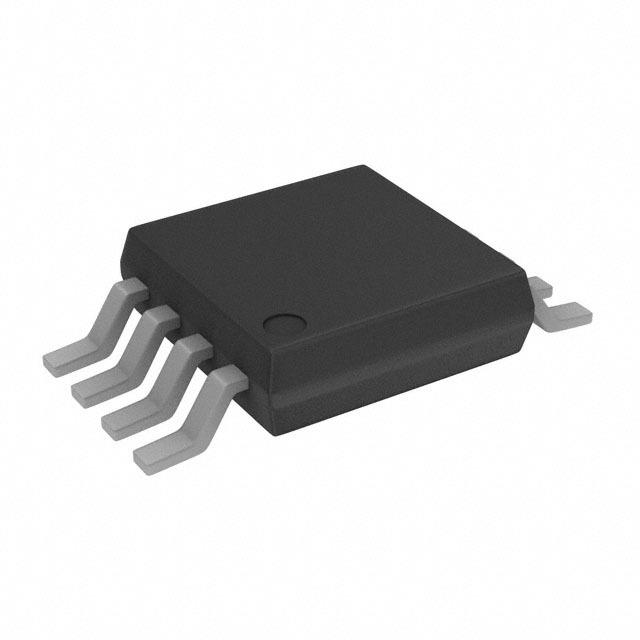
|
AD5220BRMZ10-REEL7 | ADI (Analog Devices, Inc.) | IC POT DGTL SGL 128POS 8MSOP | - | -40°C ~ 85°C | - | Original-Reel® | - | - | - | 2.7 V ~ 5.5 V | - |

|
AD5204BR10 | ADI (Analog Devices, Inc.) | IC DGTL POT QUAD 256POS 24-SOIC | - | -40°C ~ 85°C | Cascade Pin, Selectable Address | Tube | - | - | - | 2.7 V ~ 5.5 V, ±2.3 V ~ 2.7 V | - |

|
AD5160BRJZ5-RL7 | ADI (Analog Devices, Inc.) | IC POT DGTL 5K 256POS SOT23-8 | - | -40°C ~ 125°C | - | Cut Tape (CT) | - | - | - | 2.7 V ~ 5.5 V | - |
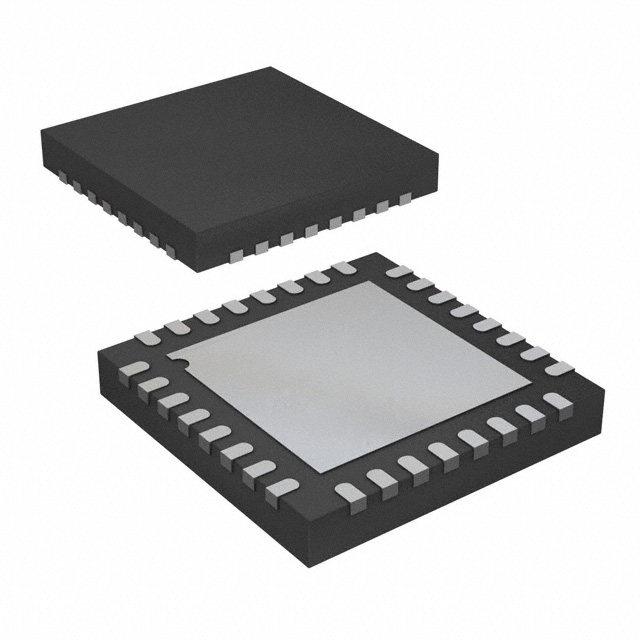
|
AD5204BCPZ10-REEL | ADI (Analog Devices, Inc.) | IC POT DGTL VR 4CHAN 32-LFCSP | - | -40°C ~ 85°C | Cascade Pin, Selectable Address | Tape & Reel (TR) | - | - | - | 2.7 V ~ 5.5 V, ±2.3 V ~ 2.7 V | - |

|
AD5115BCPZ80-RL7 | ADI (Analog Devices, Inc.) | IC DGTL POT 32POS 80K 8LFCSP | - | -40°C ~ 125°C | - | Tape & Reel (TR) | - | - | - | 2.3 V ~ 5.5 V | - |

|
AD5142BCPZ10-RL7 | ADI (Analog Devices, Inc.) | IC DGTL POT 256POS 10K 16LFCSP | - | -40°C ~ 125°C | Cascade Pin | Original-Reel® | - | - | - | 2.3 V ~ 5.5 V, ±2.25 V ~ 2.75 V | - |

|
AD5232BRU10-REEL7 | ADI (Analog Devices, Inc.) | IC DGTL POT DUAL 256POS 16-TSSOP | - | -40°C ~ 85°C | Cascade Pin | Tape & Reel (TR) | - | - | - | 2.7 V ~ 5.5 V, ±2.25 V ~ 2.75 V | - |

|
AD5142BRUZ10-RL7 | ADI (Analog Devices, Inc.) | IC DGTL POT 10K 2CH 16-TSSOP | - | -40°C ~ 125°C | Cascade Pin | Tape & Reel (TR) | - | - | - | 2.3 V ~ 5.5 V, ±2.25 V ~ 2.75 V | - |

|
AD5248BRM100-RL7 | ADI (Analog Devices, Inc.) | IC DGTL POT DUAL 100K I2C 10MSOP | - | -40°C ~ 125°C | Selectable Address | Tape & Reel (TR) | - | - | - | 2.7 V ~ 5.5 V | - |

|
AD5248BRMZ10-RL7 | ADI (Analog Devices, Inc.) | IC POT DGTL DUAL 10K 10K 10MSOP | - | -40°C ~ 125°C | Selectable Address | Tape & Reel (TR) | - | - | - | 2.7 V ~ 5.5 V | - |

|
AD5242BRU1M-REEL7 | ADI (Analog Devices, Inc.) | IC DGTL POT 256POS 16-TSSOP | - | -40°C ~ 105°C | Selectable Address | Tape & Reel (TR) | - | - | - | 2.7 V ~ 5.5 V, ±2.3 V ~ 2.7 V | - |

|
AD8400ARZ100-REEL | ADI (Analog Devices, Inc.) | IC POT DGTL 8BIT SGL 100K 8SOIC | - | -40°C ~ 125°C | - | Tape & Reel (TR) | - | - | - | 2.7 V ~ 5.5 V | - |

|
AD5228BUJZ10-R2 | ADI (Analog Devices, Inc.) | IC DGTL POT 10K UP/DN TSOT23-8 | - | -40°C ~ 105°C | - | Cut Tape (CT) | - | - | - | 2.7 V ~ 5.5 V | - |

|
AD5122ABCPZ10-RL7 | ADI (Analog Devices, Inc.) | IC DGTL POT 128POS 10K 16LFCSP | - | -40°C ~ 125°C | Selectable Address | Tape & Reel (TR) | - | - | - | 2.3 V ~ 5.5 V, ±2.25 V ~ 2.75 V | - |

|
AD5206BRU100 | ADI (Analog Devices, Inc.) | IC DGTL POT 6CH 256POS 24-TSSOP | - | -40°C ~ 85°C | Selectable Address | Tube | - | - | - | 2.7 V ~ 5.5 V, ±2.3 V ~ 2.7 V | - |

|
AD5227BUJZ100-RL7 | ADI (Analog Devices, Inc.) | IC DGTL POT UP/DN 100K TSOT23-8 | - | -40°C ~ 105°C | - | Cut Tape (CT) | - | - | - | 2.7 V ~ 5.5 V | - |

|
AD5271BRMZ-100 | ADI (Analog Devices, Inc.) | IC RHEOSTAT 5V 50-TP 256 10MSOP | - | -40°C ~ 125°C | Cascade Pin | Tube | - | - | - | 2.7 V ~ 5.5 V, ±2.5 V ~ 2.75 V | - |

|
AD5231BRUZ100-RL7 | ADI (Analog Devices, Inc.) | IC DGTL POT 100K 16-TSSOP | - | -40°C ~ 85°C | Cascade Pin | Tape & Reel (TR) | - | - | - | 2.7 V ~ 5.5 V, ±2.25 V ~ 2.75 V | - |

|
AD5160BRJ10-R2 | ADI (Analog Devices, Inc.) | IC POT DGTL 10K 256POS SOT23-8 | - | -40°C ~ 125°C | - | Cut Tape (CT) | - | - | - | 2.7 V ~ 5.5 V | - |

|
AD5248BRM10-RL7 | ADI (Analog Devices, Inc.) | IC DGTL POT DUAL 10K I2C 10-MSOP | - | -40°C ~ 125°C | Selectable Address | Tape & Reel (TR) | - | - | - | 2.7 V ~ 5.5 V | - |

|
AD5228BUJZ50-RL7 | ADI (Analog Devices, Inc.) | IC DGTL POT 50K UP/DN TSOT23-8 | - | -40°C ~ 105°C | - | Tape & Reel (TR) | - | - | - | 2.7 V ~ 5.5 V | - |

|
AD5243BRM100 | ADI (Analog Devices, Inc.) | IC DGTL POT DUAL 100K I2C 10MSOP | - | -40°C ~ 125°C | - | Tube | - | - | - | 2.7 V ~ 5.5 V | - |

|
AD8403AN10 | ADI (Analog Devices, Inc.) | IC POT DIG QUAD 10K 8BIT 24DIP | - | -40°C ~ 125°C | Cascade Pin | Tube | - | - | - | 2.7 V ~ 5.5 V | - |

|
AD5232BRU100-REEL7 | ADI (Analog Devices, Inc.) | IC DGTL POT DUAL 256POS 16-TSSOP | - | -40°C ~ 85°C | Cascade Pin | Original-Reel® | - | - | - | 2.7 V ~ 5.5 V, ±2.25 V ~ 2.75 V | - |

|
AD5116BCPZ10-500R7 | ADI (Analog Devices, Inc.) | IC DGTL POT 64POS 10K 8LFCSP | - | -40°C ~ 125°C | - | Cut Tape (CT) | - | - | - | 2.3 V ~ 5.5 V | - |

|
AD5262BRU50-REEL7 | ADI (Analog Devices, Inc.) | IC POT DUAL 50K 256POS 16TSSOP | - | -40°C ~ 85°C | Cascade Pin | Tape & Reel (TR) | - | - | - | 4.5 V ~ 16.5 V, ±5V | - |

|
AD5271BRMZ-100-RL7 | ADI (Analog Devices, Inc.) | DIGITAL POT 256POS 100K SINGLE | - | -40°C ~ 125°C | Cascade Pin | Tape & Reel (TR) | - | - | - | 2.7 V ~ 5.5 V, ±2.5 V ~ 2.75 V | - |

|
AD5203ARZ100-REEL | ADI (Analog Devices, Inc.) | IC POT DGTL QUAD 64POS 24SOIC | - | -40°C ~ 85°C | - | Tape & Reel (TR) | - | - | - | 2.7 V ~ 5.5 V | - |

|
AD5242BRU100 | ADI (Analog Devices, Inc.) | IC DGTL POT 256POS 16-TSSOP | - | -40°C ~ 105°C | Selectable Address | Tube | - | - | - | 2.7 V ~ 5.5 V, ±2.3 V ~ 2.7 V | - |

|
AD5282BRUZ200-R7 | ADI (Analog Devices, Inc.) | IC POT DGTL 200K 256POS 16TSSOP | - | -40°C ~ 85°C | Selectable Address | Original-Reel® | - | - | - | 4.5 V ~ 16.5 V, ±5V | - |

|
AD5263BRUZ20 | ADI (Analog Devices, Inc.) | IC DGTL POT QUAD 20K 24-TSSOP | - | -40°C ~ 125°C | Cascade Pin, Selectable Address | Tube | - | - | - | 4.5 V ~ 16.5 V, ±4.5 V ~ 7.5 V | - |

|
AD5112BCPZ80-1-RL7 | ADI (Analog Devices, Inc.) | IC DGTL POT 64POS 80K SGL 8LFCSP | - | -40°C ~ 125°C | - | Cut Tape (CT) | - | - | - | 1.8 V ~ 5.5 V, 2.3 V ~ 5.5 V | - |

|
AD5207BRU100-REEL7 | ADI (Analog Devices, Inc.) | IC DGTL POT DUAL 256POS 14-TSSOP | - | -40°C ~ 125°C | Cascade Pin | Tape & Reel (TR) | - | - | - | 2.7 V ~ 5.5 V, ±2.2 V ~ 2.7 V | - |

|
AD5175BRMZ-10 | ADI (Analog Devices, Inc.) | IC DGTL POT 1024POS 10K 10MSOP | - | -40°C ~ 125°C | Selectable Address | Tube | - | - | - | 2.7 V ~ 5.5 V, ±2.5 V ~ 2.75 V | - |

|
AD5220BRZ100-REEL7 | ADI (Analog Devices, Inc.) | IC POT DGTL SGL 128POS 8SOIC | - | -40°C ~ 85°C | - | Original-Reel® | - | - | - | 2.7 V ~ 5.5 V | - |

|
AD5204BRZ100-REEL | ADI (Analog Devices, Inc.) | IC DGTL POT QUAD 100K 24-SOIC | - | -40°C ~ 85°C | Cascade Pin, Selectable Address | Tape & Reel (TR) | - | - | - | 2.7 V ~ 5.5 V, ±2.3 V ~ 2.7 V | - |

|
AD5231BRUZ100 | ADI (Analog Devices, Inc.) | IC DGTL POT 100K SPI 16-TSSOP | - | -40°C ~ 85°C | Cascade Pin | Tube | - | - | - | 2.7 V ~ 5.5 V, ±2.25 V ~ 2.75 V | - |

|
AD5280BRUZ20 | ADI (Analog Devices, Inc.) | IC DGTL POT 15V 20K 14-TSSOP | - | -40°C ~ 85°C | Selectable Address | Tube | - | - | - | 4.5 V ~ 16.5 V, ±5V | - |

|
AD5282BRUZ20-REEL7 | ADI (Analog Devices, Inc.) | IC POT DGTL 20K 256POS 16TSSOP | - | -40°C ~ 85°C | Selectable Address | Tape & Reel (TR) | - | - | - | 4.5 V ~ 16.5 V, ±5V | - |

|
AD5292BRUZ-100-RL7 | ADI (Analog Devices, Inc.) | IC DGTL POT 1024POS 100K 14TSSOP | - | -40°C ~ 105°C | Cascade Pin | Tape & Reel (TR) | - | - | - | 9 V ~ 33 V, ±9 V ~ 16.5 V | - |

|
AD5116BCPZ10-RL7 | ADI (Analog Devices, Inc.) | IC DGTL POT 64POS 10K 8LFCSP | - | -40°C ~ 125°C | - | Tape & Reel (TR) | - | - | - | 2.3 V ~ 5.5 V | - |

|
AD5258BRMZ50 | ADI (Analog Devices, Inc.) | IC POT DGTL I2C 50K 64P 10MSOP | - | -40°C ~ 85°C | Selectable Address | Tube | - | - | - | 2.7 V ~ 5.5 V | - |

|
AD5242BRUZ10 | ADI (Analog Devices, Inc.) | IC DGTL POT 256POS 16-TSSOP | - | -40°C ~ 105°C | Selectable Address | Tube | - | - | - | 2.7 V ~ 5.5 V, ±2.3 V ~ 2.7 V | - |

|
AD5232BRU50 | ADI (Analog Devices, Inc.) | IC DGTL POT DUAL 256POS 16-TSSOP | - | -40°C ~ 85°C | Cascade Pin | Tube | - | - | - | 2.7 V ~ 5.5 V, ±2.25 V ~ 2.75 V | - |

|
AD5271BCPZ-20-RL7 | ADI (Analog Devices, Inc.) | IC RHEOSTAT 5V 50-TP 256 10LFCSP | - | -40°C ~ 125°C | Cascade Pin | Cut Tape (CT) | - | - | - | 2.7 V ~ 5.5 V, ±2.5 V ~ 2.75 V | - |

|
AD5161BRMZ50 | ADI (Analog Devices, Inc.) | IC POT DGTL 50K 256POS 10-MSOP | - | -40°C ~ 125°C | Cascade Pin, Selectable Address | Tube | - | - | - | 2.7 V ~ 5.5 V | - |

|
AD5170BRMZ100 | ADI (Analog Devices, Inc.) | IC POT DGTL 100K 256POS 10-MSOP | - | -40°C ~ 125°C | Selectable Address | Tube | - | - | - | 2.7 V ~ 5.5 V | - |

|
AD8403ARUZ1 | ADI (Analog Devices, Inc.) | IC POT DGTL QUAD 1K 24-TSSOP | - | -40°C ~ 125°C | Cascade Pin | Tube | - | - | - | 2.7 V ~ 5.5 V | - |

|
AD5220BRZ100 | ADI (Analog Devices, Inc.) | IC POT DGTL SGL 128POS 8SOIC | - | -40°C ~ 85°C | - | Tube | - | - | - | 2.7 V ~ 5.5 V | - |

|
AD5254BRUZ100-RL7 | ADI (Analog Devices, Inc.) | IC DGTL POT 256POS 100K 20TSSOP | - | -40°C ~ 105°C | Selectable Address | Original-Reel® | - | - | - | 2.7 V ~ 5.5 V, ±2.25 V ~ 2.75 V | - |

|
AD5262BRUZ50-RL7 | ADI (Analog Devices, Inc.) | IC POT DUAL 50K 256POS 16TSSOP | - | -40°C ~ 85°C | Cascade Pin | Tape & Reel (TR) | - | - | - | 4.5 V ~ 16.5 V, ±5V | - |

|
AD5241BRU100-REEL7 | ADI (Analog Devices, Inc.) | IC DGTL POT 256POS 14-TSSOP | - | -40°C ~ 105°C | Selectable Address | Tape & Reel (TR) | - | - | - | 2.7 V ~ 5.5 V, ±2.3 V ~ 2.7 V | - |

|
AD5260BRUZ20 | ADI (Analog Devices, Inc.) | IC DCP 1CH 20K SPI 14-TSSOP | - | -40°C ~ 85°C | Cascade Pin | Tube | - | - | - | 4.5 V ~ 16.5 V, ±5V | - |

|
AD5253BRU10 | ADI (Analog Devices, Inc.) | IC DGTL POT QUAD 10K I2C 20TSSOP | - | -40°C ~ 105°C | Selectable Address | Tube | - | - | - | 2.7 V ~ 5.5 V, ±2.25 V ~ 2.75 V | - |

|
AD5142BRUZ10 | ADI (Analog Devices, Inc.) | IC DGTL POT 10K 2CH 16-TSSOP | - | -40°C ~ 125°C | Cascade Pin | Tube | - | - | - | 2.3 V ~ 5.5 V, ±2.25 V ~ 2.75 V | - |

|
AD5143BCPZ100-RL7 | ADI (Analog Devices, Inc.) | IC DGTL POT 256POS 100K 16LFCSP | - | -40°C ~ 125°C | Selectable Address | Tape & Reel (TR) | - | - | - | 2.3 V ~ 5.5 V, ±2.25 V ~ 2.75 V | - |

|
AD8400AR1-REEL | ADI (Analog Devices, Inc.) | IC POT DIG SGLE 1K 8BIT 8SOIC | - | -40°C ~ 125°C | - | Tape & Reel (TR) | - | - | - | 2.7 V ~ 5.5 V | - |

|
AD5242BR100-REEL7 | ADI (Analog Devices, Inc.) | IC DGTL POT 256POS 16-SOIC | - | -40°C ~ 105°C | Selectable Address | Tape & Reel (TR) | - | - | - | 2.7 V ~ 5.5 V, ±2.3 V ~ 2.7 V | - |

|
AD5222BRZ1M | ADI (Analog Devices, Inc.) | IC DGTL POT 128POS 1M DL 14SOIC | - | -40°C ~ 85°C | - | Tube | - | - | - | 2.7 V ~ 5.5 V, ±2.3 V ~ 2.7 V | - |

|
AD5245BRJZ50-RL7 | ADI (Analog Devices, Inc.) | IC DGTL POT 256POS 50K SOT23-8 | - | -40°C ~ 125°C | Selectable Address | Tape & Reel (TR) | - | - | - | 2.7 V ~ 5.5 V | - |

|
AD5162BRM50 | ADI (Analog Devices, Inc.) | IC POT DUAL 50K 256POS 10-MSOP | - | -40°C ~ 125°C | - | Tube | - | - | - | 2.7 V ~ 5.5 V | - |

|
AD5142AWBCPZ10-RL7 | ADI (Analog Devices, Inc.) | IC DGTL POT 2CH 256POS NVM I2C | - | -40°C ~ 125°C | Selectable Address | - | - | - | - | 2.3 V ~ 5.5 V, ±2.25 V ~ 2.75 V | - |

|
AD5162BRM100-RL7 | ADI (Analog Devices, Inc.) | IC DGTL POT DUAL 256POS 10-MSOP | - | -40°C ~ 125°C | - | Tape & Reel (TR) | - | - | - | 2.7 V ~ 5.5 V | - |

|
AD5273BRJZ100-R2 | ADI (Analog Devices, Inc.) | IC POT DGTL 1K 64POS SOT23 | - | -40°C ~ 105°C | Selectable Address | Tape & Reel (TR) | - | - | - | 2.7 V ~ 5.5 V | - |

|
AD5235BRU25-EP-RL7 | ADI (Analog Devices, Inc.) | IC DGTL POT 1024POS DUAL 16TSSOP | - | -40°C ~ 125°C | - | Tape & Reel (TR) | - | - | - | 2.7 V ~ 5 V, ±2.25 V ~ 2.75 V | - |

|
AD5162BRMZ2.5-RL7 | ADI (Analog Devices, Inc.) | IC POT DGTL DUAL 256POS 10MSOP | - | -40°C ~ 125°C | - | Tape & Reel (TR) | - | - | - | 2.7 V ~ 5.5 V | - |

|
AD5252BRU100 | ADI (Analog Devices, Inc.) | IC DIG POT DUAL 256 100K 14TSSOP | - | -40°C ~ 105°C | Selectable Address | Tube | - | - | - | 2.7 V ~ 5.5 V, ±2.25 V ~ 2.75 V | - |

|
AD5173BRMZ50-RL7 | ADI (Analog Devices, Inc.) | IC POT DGTL DUAL 50K OTP 10MSOP | - | -40°C ~ 125°C | Selectable Address | Tape & Reel (TR) | - | - | - | 2.7 V ~ 5.5 V | - |

|
AD5207BRUZ100 | ADI (Analog Devices, Inc.) | IC DGTL POT DUAL 256POS 14-TSSOP | - | -40°C ~ 125°C | Cascade Pin | Tube | - | - | - | 2.7 V ~ 5.5 V, ±2.2 V ~ 2.7 V | - |

|
AD5248BRM100 | ADI (Analog Devices, Inc.) | IC DGTL POT DUAL 100K I2C 10MSOP | - | -40°C ~ 125°C | Selectable Address | Tube | - | - | - | 2.7 V ~ 5.5 V | - |

|
AD5282BRUZ50-REEL7 | ADI (Analog Devices, Inc.) | IC POT DGTL 50K 256POS 16TSSOP | - | -40°C ~ 85°C | Selectable Address | Tape & Reel (TR) | - | - | - | 4.5 V ~ 16.5 V, ±5V | - |

|
AD8403ARUZ10-REEL | ADI (Analog Devices, Inc.) | IC POT DIG QUAD 10K 8B 24TSSOP | - | -40°C ~ 125°C | Cascade Pin | Tape & Reel (TR) | - | - | - | 2.7 V ~ 5.5 V | - |

|
AD5207BRUZ50 | ADI (Analog Devices, Inc.) | IC DGTL POT 256POS 50K 14TSSOP | - | -40°C ~ 125°C | Cascade Pin | Tube | - | - | - | 2.7 V ~ 5.5 V, ±2.2 V ~ 2.7 V | - |

|
AD8400ARZ100 | ADI (Analog Devices, Inc.) | IC DGTL POT 8BIT 100K 1CH 8-SOIC | - | -40°C ~ 125°C | - | Tube | - | - | - | 2.7 V ~ 5.5 V | - |

|
AD5142BRUZ100-RL7 | ADI (Analog Devices, Inc.) | IC DGTL POT 100K 2CH 16-TSSOP | - | -40°C ~ 125°C | Cascade Pin | Cut Tape (CT) | - | - | - | 2.3 V ~ 5.5 V, ±2.25 V ~ 2.75 V | - |

|
AD5272BRMZ-20-RL7 | ADI (Analog Devices, Inc.) | IC DGTL POT 1024POS 20K 10MSOP | - | -40°C ~ 125°C | Selectable Address | Cut Tape (CT) | - | - | - | 2.7 V ~ 5.5 V, ±2.5 V ~ 2.75 V | - |

|
AD5232BRUZ100 | ADI (Analog Devices, Inc.) | IC DGTL POT DUAL 256POS 16-TSSOP | - | -40°C ~ 85°C | Cascade Pin | Tube | - | - | - | 2.7 V ~ 5.5 V, ±2.25 V ~ 2.75 V | - |

|
AD5254BRU1 | ADI (Analog Devices, Inc.) | IC DGTL POT QUAD 1K 20-TSSOP | - | -40°C ~ 105°C | Selectable Address | Tube | - | - | - | 2.7 V ~ 5.5 V, ±2.25 V ~ 2.75 V | - |

|
AD5241BRZ10-RL7 | ADI (Analog Devices, Inc.) | IC POT DGTL 256POS 14-SOIC | - | -40°C ~ 105°C | Selectable Address | Tape & Reel (TR) | - | - | - | 2.7 V ~ 5.5 V, ±2.3 V ~ 2.7 V | - |

|
AD5204BR10-REEL | ADI (Analog Devices, Inc.) | IC DGTL POT QUAD 256POS 24-SOIC | - | -40°C ~ 85°C | Cascade Pin, Selectable Address | Tape & Reel (TR) | - | - | - | 2.7 V ~ 5.5 V, ±2.3 V ~ 2.7 V | - |

|
AD5161BRM10-RL7 | ADI (Analog Devices, Inc.) | IC DGTL POT SPI 256POS 10-MSOP | - | -40°C ~ 125°C | Cascade Pin, Selectable Address | Tape & Reel (TR) | - | - | - | 2.7 V ~ 5.5 V | - |

|
AD5207BRU50 | ADI (Analog Devices, Inc.) | IC DGTL POT DUAL 256POS 14TSSOP | - | -40°C ~ 125°C | Cascade Pin | Tube | - | - | - | 2.7 V ~ 5.5 V, ±2.2 V ~ 2.7 V | - |

|
AD5292SRUZ-20-EP | ADI (Analog Devices, Inc.) | IC DGTL POT 1024POS 20K 14TSSOP | - | - | - | - | - | - | - | - | - |
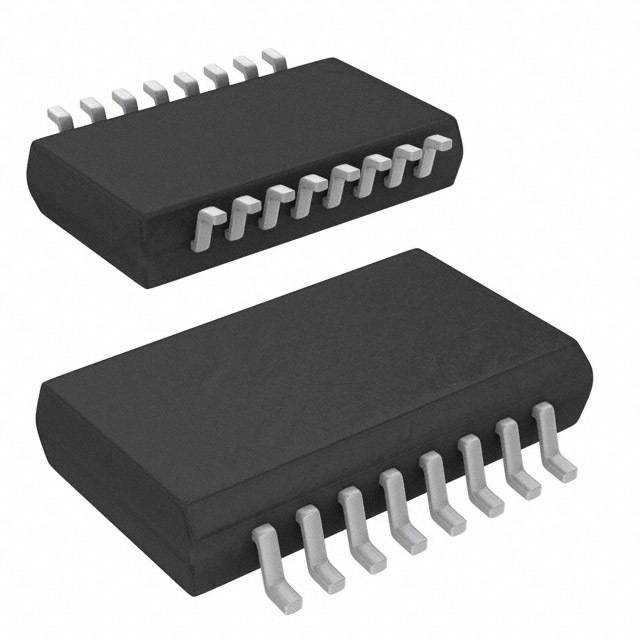
|
AD7376ARWZ50 | ADI (Analog Devices, Inc.) | IC DIGITAL POT 50K 16-SOIC | - | -40°C ~ 85°C | Cascade Pin | Tube | - | - | - | 4.5 V ~ 33 V, ±4.5 V ~ 16.5 V | - |

|
AD5262BRU20-REEL7 | ADI (Analog Devices, Inc.) | IC POT DUAL 20K 256POS 16TSSOP | - | -40°C ~ 85°C | Cascade Pin | Tape & Reel (TR) | - | - | - | 4.5 V ~ 16.5 V, ±5V | - |

|
AD5254BRUZ10 | ADI (Analog Devices, Inc.) | IC POT DGTL QUAD 10K I2C 20TSSOP | - | -40°C ~ 105°C | Selectable Address | Tube | - | - | - | 2.7 V ~ 5.5 V, ±2.25 V ~ 2.75 V | - |

|
AD5121BCPZ100-RL7 | ADI (Analog Devices, Inc.) | IC DGTL POT 100K 1CH 16-LFCSP | - | -40°C ~ 125°C | Selectable Address | Tape & Reel (TR) | - | - | - | 2.3 V ~ 5.5 V, ±2.25 V ~ 2.75 V | - |

|
AD5253BRUZ50-RL7 | ADI (Analog Devices, Inc.) | IC POT DGTL QUAD 50K 20TSSOP | - | -40°C ~ 105°C | Selectable Address | Tape & Reel (TR) | - | - | - | 2.7 V ~ 5.5 V, ±2.25 V ~ 2.75 V | - |

|
AD5203ARUZ100 | ADI (Analog Devices, Inc.) | IC POT DGTL QUAD 64POS 24TSSOP | - | -40°C ~ 85°C | - | Tube | - | - | - | 2.7 V ~ 5.5 V | - |

|
AD5204BRUZ50 | ADI (Analog Devices, Inc.) | IC POT DGTL QUAD 256POS 24-TSSOP | - | -40°C ~ 85°C | Cascade Pin, Selectable Address | Tube | - | - | - | 2.7 V ~ 5.5 V, ±2.3 V ~ 2.7 V | - |

|
AD5162BRM100 | ADI (Analog Devices, Inc.) | IC POT DUAL 100K 256POS 10-MSOP | - | -40°C ~ 125°C | - | Tube | - | - | - | 2.7 V ~ 5.5 V | - |

|
AD5228BUJZ10-RL7 | ADI (Analog Devices, Inc.) | IC DGTL POT UP/DN 10K TSOT23-8 | - | -40°C ~ 105°C | - | Tape & Reel (TR) | - | - | - | 2.7 V ~ 5.5 V | - |

|
AD5280BRUZ200-R7 | ADI (Analog Devices, Inc.) | IC POT DGTL 200K 256POS 14TSSOP | - | -40°C ~ 85°C | Selectable Address | Tape & Reel (TR) | - | - | - | 4.5 V ~ 16.5 V, ±5V | - |

|
AD5253BRUZ100 | ADI (Analog Devices, Inc.) | IC POT DGTL QUAD 100K 20TSSOP | - | -40°C ~ 105°C | Selectable Address | Tube | - | - | - | 2.7 V ~ 5.5 V, ±2.25 V ~ 2.75 V | - |

|
AS1503-T | ams | IC POT DGTL 100K SERIAL 8-SOIC | - | -40°C ~ 125°C | - | Tape & Reel (TR) | - | - | - | 2.7 V ~ 5.5 V | - |

|
S1803E-20.0000 | Diodes Incorporated | CLOCK SAW OSCILLATOR SEAM7050 T& | - | - | - | - | - | - | - | - | - |

|
X9317ZM8-2.7T1 | Intersil | IC XDCP SGL 100TAP 1K 8-MSOP | - | 0°C ~ 70°C | - | Tape & Reel (TR) | - | - | - | 2.7 V ~ 5.5 V | - |

|
X9409WS24IZ | Intersil | IC XDCP QUAD 64-TAP 10K 24-SOIC | - | -40°C ~ 85°C | Selectable Address | Tube | - | - | - | 5V | - |

|
X9315WSZT1 | Intersil | IC XDCP 32-TAP 10K 3WIRE 8-SOIC | - | 0°C ~ 70°C | - | Tape & Reel (TR) | - | - | - | 5V | - |

|
X9015UM8Z-2.7T1 | Intersil | IC XDCP SGL 32-TAP 50K 8-MSOP | - | 0°C ~ 70°C | - | Tape & Reel (TR) | - | - | - | 2.7 V ~ 5.5 V | - |

|
X9317TV8Z-2.7T1 | Intersil | IC XDCP 100TAP 100K 3WIRE 8TSSOP | - | 0°C ~ 70°C | - | Tape & Reel (TR) | - | - | - | 2.7 V ~ 5.5 V | - |

|
X9110TV14IZ-2.7T1 | Intersil | IC XDCP 1024-TAP 100K 14-TSSOP | - | -40°C ~ 85°C | Selectable Address | Tape & Reel (TR) | - | - | - | 2.7 V ~ 5.5 V | - |
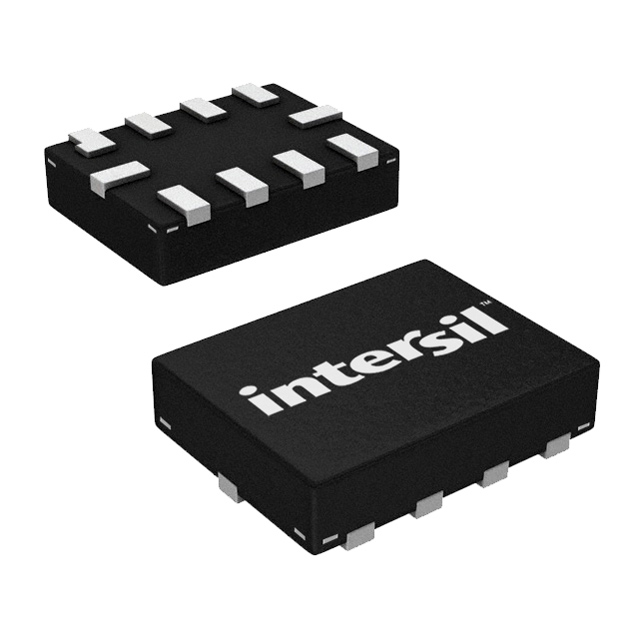
|
ISL23318WFRUZ-T7A | Intersil | IC DGTL POT 1CH 10K 10UTQFN | - | -40°C ~ 125°C | Selectable Address | Tape & Reel (TR) | - | - | - | 1.2 V ~ 5.5 V, 1.7 V ~ 5.5 V | - |

|
X9317TM8T1 | Intersil | IC XDCP 100TAP 100K 3WIRE 8-MSOP | - | 0°C ~ 70°C | - | Tape & Reel (TR) | - | - | - | 5V | - |

|
ISL23315TFRUZ-TK | Intersil | IC DGTL POT 256POS 100K 10TQFN | - | -40°C ~ 125°C | Selectable Address | Tape & Reel (TR) | - | - | - | 1.2 V ~ 5.5 V, 1.7 V ~ 5.5 V | - |
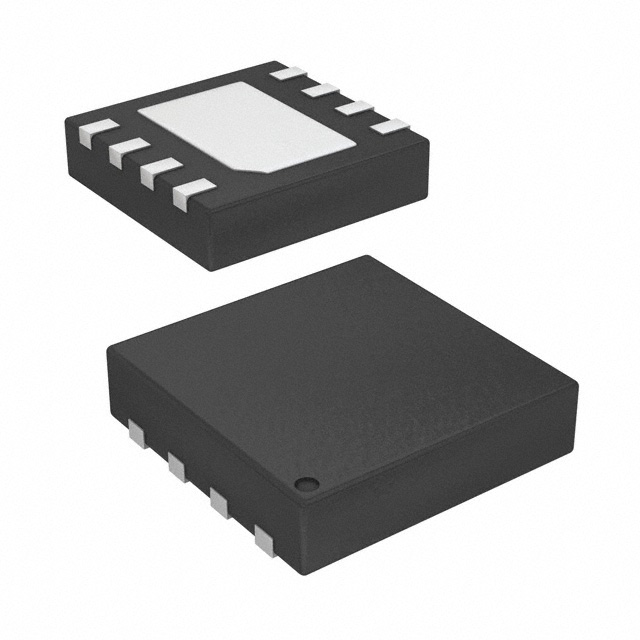
|
ISL95810UIRT8Z-T | Intersil | IC XDCP 256-TAP 50KOHM 8-TDFN | - | -40°C ~ 85°C | - | Tape & Reel (TR) | - | - | - | 2.7 V ~ 5.5 V | - |

|
X9268TS24I-2.7T1 | Intersil | IC XDCP DUAL 256TAP 100K 24-SOIC | - | -40°C ~ 85°C | Selectable Address | Tape & Reel (TR) | - | - | - | ±2.7 V ~ 5.5 V | - |
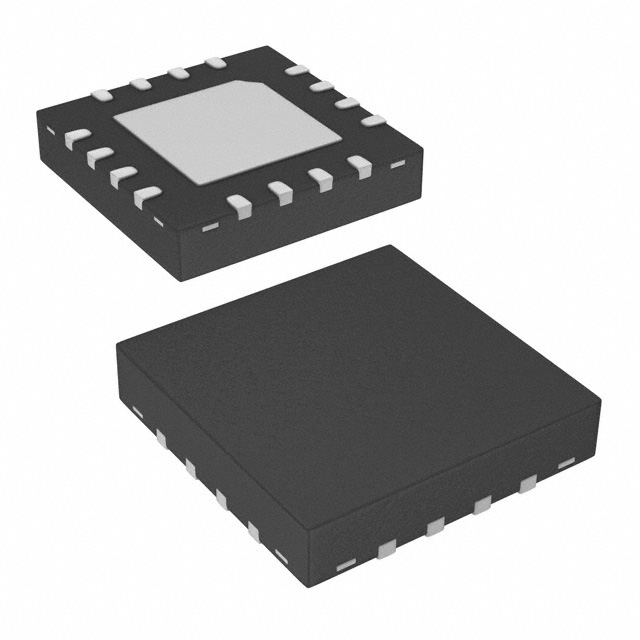
|
ISL22323UFR16Z-TK | Intersil | IC POT DGTL 256TP LN LP 16-QFN | - | -40°C ~ 125°C | Selectable Address | Tape & Reel (TR) | - | - | - | ±2.25 V ~ 5.5 V | - |

|
X9258UV24I-2.7 | Intersil | IC XDCP QUAD 256TAP 50K 24-TSSOP | - | -40°C ~ 85°C | Selectable Address | Tube | - | - | - | ±2.7 V ~ 5.5 V | - |

|
X9260US24T1 | Intersil | IC XDCP DUAL 256TAP 50K 24-SOIC | - | 0°C ~ 70°C | - | Tape & Reel (TR) | - | - | - | 5V | - |
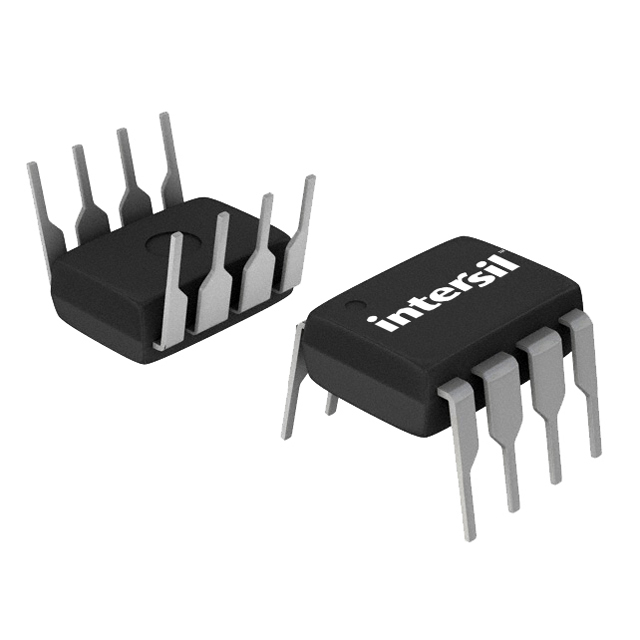
|
X9317UP-2.7 | Intersil | IC XDCP 100TAP 50K 3-WIRE 8-DIP | - | 0°C ~ 70°C | - | Tube | - | - | - | 2.7 V ~ 5.5 V | - |

|
X9251US24-2.7 | Intersil | IC DCP QUAD 50K 256TP 24SOIC | - | 0°C ~ 70°C | Selectable Address | Tube | - | - | - | 2.7 V ~ 5.5 V | - |

|
X9418YV24IZ | Intersil | IC XDCP DUAL 64TAP 2.5K 24-TSSOP | - | -40°C ~ 85°C | Selectable Address | Tube | - | - | - | ±5V | - |

|
ISL22316WFRT10Z-TK | Intersil | IC POT DGTL 128TP LN LP 10-TDFN | - | -40°C ~ 125°C | Selectable Address | Tape & Reel (TR) | - | - | - | 2.7 V ~ 5.5 V | - |

|
X9511WSI | Intersil | IC DIGITAL POT 10K 32TP 8SOIC | - | -40°C ~ 85°C | - | Tube | - | - | - | 5V | - |

|
X93156UM8IZ-2.7T1 | Intersil | IC POT DGTL 50K OHM 8-MSOP | - | -40°C ~ 85°C | - | Cut Tape (CT) | - | - | - | 2.7 V ~ 5.5 V | - |

|
X9259UV24IZ-2.7T1 | Intersil | IC XDCP QUAD 256TAP 50K 24-TSSOP | - | -40°C ~ 85°C | Selectable Address | Tape & Reel (TR) | - | - | - | 2.7 V ~ 5.5 V | - |
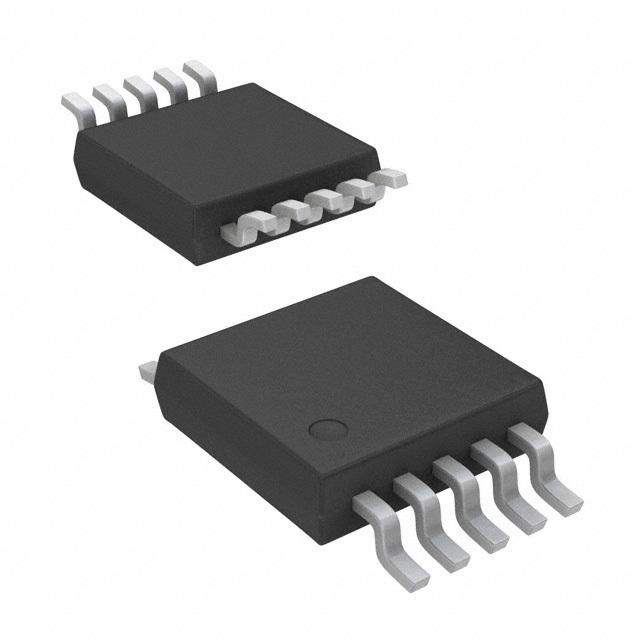
|
ISL22329UFU10Z | Intersil | IC POT DGTL 128TP LN LP 10-MSOP | - | -40°C ~ 125°C | Selectable Address | Tube | - | - | - | 2.7 V ~ 5.5 V | - |

|
ISL22323TFR16Z-TK | Intersil | IC POT DGTL 256TP LN LP 16-QFN | - | -40°C ~ 125°C | Selectable Address | Tape & Reel (TR) | - | - | - | ±2.25 V ~ 5.5 V | - |

|
X9111TV14I-2.7T1 | Intersil | IC XDCP SGL 1024TAP 100K 14TSSOP | - | -40°C ~ 85°C | Selectable Address | Tape & Reel (TR) | - | - | - | 2.7 V ~ 5.5 V | - |

|
X9116WS8Z-2.7 | Intersil | IC XDCP 16-TAP 10K CMOS 8-SOIC | - | 0°C ~ 70°C | - | Tube | - | - | - | 2.7 V ~ 5.5 V | - |

|
X9428WV14IZ | Intersil | IC DGTL POT 10K 1CH 14TSSOP | - | -40°C ~ 85°C | Selectable Address | Tube | - | - | - | ±5V | - |

|
X9252UV24-2.7 | Intersil | IC DCP QUAD 250K 256TAP 24-TSSOP | - | 0°C ~ 70°C | Selectable Address | Tube | - | - | - | 2.7 V ~ 5.5 V | - |

|
X9400WS24-2.7T1 | Intersil | IC XDCP QUAD 64-TAP 10K 24-SOIC | - | 0°C ~ 70°C | Selectable Address | Tape & Reel (TR) | - | - | - | ±2.7 V ~ 5.5 V | - |

|
X9400WV24-2.7 | Intersil | IC DCP QUAD 10K 64TP 24TSSOP | - | 0°C ~ 70°C | Selectable Address | Tube | - | - | - | ±2.7 V ~ 5.5 V | - |

|
X9C503S | Intersil | IC DIGITAL POT 50K 100TP 8SOIC | - | 0°C ~ 70°C | - | Tube | - | - | - | 5V | - |

|
X9317TS8 | Intersil | IC XDCP 100TAP 100K 3WIRE 8-SOIC | - | 0°C ~ 70°C | - | Tube | - | - | - | 5V | - |

|
X9015US8Z | Intersil | IC XDCP SGL 32-TAP 50K 8-SOIC | - | 0°C ~ 70°C | - | Tube | - | - | - | 5V | - |

|
X9317WV8IZT1 | Intersil | IC XDCP SGL 100TAP 10K 8-TSSOP | - | -40°C ~ 85°C | - | Tape & Reel (TR) | - | - | - | 5V | - |

|
ISL22323WFV14Z-TK | Intersil | IC POT DGTL 256TP LN LP 14-TSSOP | - | -40°C ~ 125°C | Selectable Address | Tape & Reel (TR) | - | - | - | ±2.25 V ~ 5.5 V | - |

|
X9116WM8Z-2.7T1 | Intersil | IC XDCP 16-TAP 10K CMOS 8-MSOP | - | 0°C ~ 70°C | - | Tape & Reel (TR) | - | - | - | 2.7 V ~ 5.5 V | - |

|
X9409WV24I | Intersil | IC DCP QUAD 10K 64TP 24TSSOP | - | -40°C ~ 85°C | Selectable Address | Tube | - | - | - | 5V | - |

|
X93155UM8IZT1 | Intersil | IC POT DGTL 50K OHM 8-MSOP | - | -40°C ~ 85°C | - | Cut Tape (CT) | - | - | - | 5V | - |

|
ISL22313TFU10Z-TK | Intersil | IC POT DGTL 256TP LN LP 10-MSOP | - | -40°C ~ 125°C | Selectable Address | Tape & Reel (TR) | - | - | - | 2.25 V ~ 5.5 V | - |

|
X9C503ST2 | Intersil | IC XDCP 100-TAP 50K EE 8-SOIC | - | 0°C ~ 70°C | - | Tape & Reel (TR) | - | - | - | 5V | - |

|
ISL23328WFRUZ-T7A | Intersil | IC DGTL POT 2CH 10K 16UTQFN | - | -40°C ~ 125°C | Selectable Address | Tape & Reel (TR) | - | - | - | 1.2 V ~ 5.5 V, 1.7 V ~ 5.5 V | - |

|
X9401WS24-2.7T1 | Intersil | IC XDCP QUAD 64-TAP 10K 24-SOIC | - | 0°C ~ 70°C | Selectable Address | Tape & Reel (TR) | - | - | - | 2.7 V ~ 5.5 V | - |

|
ISL23511UFB8Z | Intersil | IC POT DGTL PB 32TP LN LP 8-SOIC | - | -40°C ~ 125°C | - | Tube | - | - | - | 2.7 V ~ 5.5 V | - |

|
X9279UV14IZT1 | Intersil | IC XDCP SGL 256TAP 50K 14-TSSOP | - | -40°C ~ 85°C | Selectable Address | Tape & Reel (TR) | - | - | - | 5V | - |

|
X9241AMVT1 | Intersil | IC XDCP QUAD 2/10/10/50K 20TSSOP | - | 0°C ~ 70°C | Selectable Address | Tape & Reel (TR) | - | - | - | 5V | - |

|
X9315TS-2.7T1 | Intersil | IC XDCP 32-TAP 100K 3WIRE 8-SOIC | - | 0°C ~ 70°C | - | Tape & Reel (TR) | - | - | - | 2.7 V ~ 5.5 V | - |

|
ISL95810UIRT8 | Intersil | IC XDCP SGL 256-TAP 50KOHM 8-DFN | - | -40°C ~ 85°C | - | Tube | - | - | - | 2.7 V ~ 5.5 V | - |

|
X9C303V8IT1 | Intersil | IC XDCP 100-TAP 32K EE 8-TSSOP | - | -40°C ~ 85°C | - | Tape & Reel (TR) | - | - | - | ±5V | - |

|
X9317TS8Z-2.7 | Intersil | IC XDCP 100TAP 100K 3WIRE 8-SOIC | - | 0°C ~ 70°C | - | Tube | - | - | - | 2.7 V ~ 5.5 V | - |

|
X9260TS24Z | Intersil | IC XDCP DUAL 256TP 100K 24-SOIC | - | 0°C ~ 70°C | Selectable Address | Tube | - | - | - | ±5V | - |

|
X9429WV14Z | Intersil | IC XDCP SGL 64-TAP 10K 14-TSSOP | - | 0°C ~ 70°C | Selectable Address | Tube | - | - | - | 5V | - |

|
X95840WV20I-2.7 | Intersil | IC XDCP QUAD 256TAP 10K 20-TSSOP | - | -40°C ~ 85°C | Selectable Address | Tube | - | - | - | 2.7 V ~ 5.5 V | - |

|
X9401WV24 | Intersil | IC DCP QUAD 10K 64TP 24TSSOP | - | 0°C ~ 70°C | Selectable Address | Tube | - | - | - | 5V | - |

|
X9317TM8-2.7T2 | Intersil | IC XDCP 100TAP 100K 3WIRE 8-MSOP | - | 0°C ~ 70°C | - | Tape & Reel (TR) | - | - | - | 2.7 V ~ 5.5 V | - |
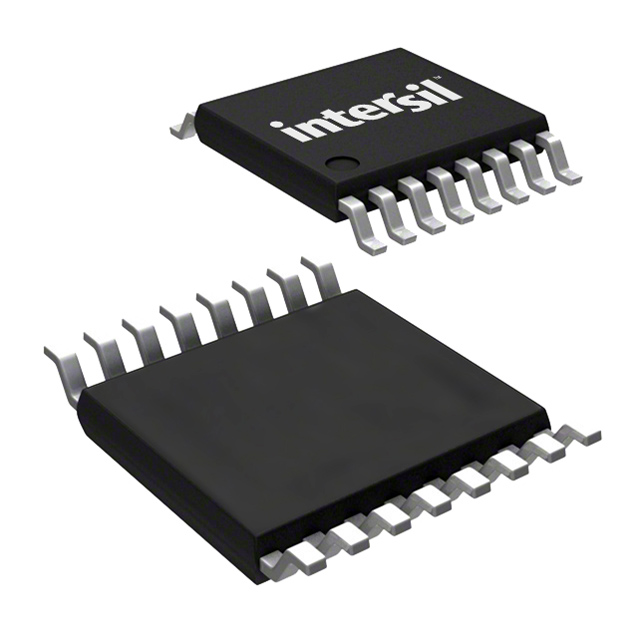
|
X9421YS16IZ-2.7 | Intersil | IC XDCP SGL 64-TAP 2.5K 16-SOIC | - | -40°C ~ 85°C | Selectable Address | Tube | - | - | - | 2.7 V ~ 5.5 V | - |

|
X9319WS8ZT1 | Intersil | IC XDCP 100-TAP 10K 8-SOIC | - | 0°C ~ 70°C | - | Tape & Reel (TR) | - | - | - | 5V | - |

|
X9258US24I-2.7 | Intersil | IC DGTL POT QUAD 50K 24SOIC | - | -40°C ~ 85°C | Selectable Address | Tube | - | - | - | ±2.7 V ~ 5.5 V | - |

|
X9251US24I-2.7 | Intersil | IC DCP QUAD 50K 256TP 24SOIC | - | -40°C ~ 85°C | Selectable Address | Tube | - | - | - | 2.7 V ~ 5.5 V | - |

|
X9279UV14Z-2.7T1 | Intersil | IC POT DGTL SGL 50K OHM 14-TSSOP | - | 0°C ~ 70°C | Selectable Address | Tape & Reel (TR) | - | - | - | 2.7 V ~ 5.5 V | - |

|
X9317ZM8T1 | Intersil | IC XDCP SGL 100TAP 1K 8-MSOP | - | 0°C ~ 70°C | - | Tape & Reel (TR) | - | - | - | 5V | - |

|
X9315UMI-2.7 | Intersil | IC DIGITAL POT 50K 32TP 8MSOP | - | -40°C ~ 85°C | - | Tube | - | - | - | 2.7 V ~ 5.5 V | - |

|
X9259UV24IZ | Intersil | IC XDCP QUAD 256TAP 50K 24-TSSOP | - | -40°C ~ 85°C | Selectable Address | Tube | - | - | - | 5V | - |

|
ISL23448WFRZ-TK | Intersil | IC DGTL POT 4CH 10K 20QFN | - | -40°C ~ 125°C | Cascade Pin | Tape & Reel (TR) | - | - | - | 1.2 V ~ 5.5 V, 1.7 V ~ 5.5 V | - |

|
X9116WM8Z | Intersil | IC XDCP 16-TAP 10K CMOS 8-MSOP | - | 0°C ~ 70°C | - | Tube | - | - | - | 5V | - |

|
X9408WV24I-2.7 | Intersil | IC DCP QUAD 10K 64TP 24TSSOP | - | -40°C ~ 85°C | Selectable Address | Tube | - | - | - | ±2.7 V ~ 5.5 V | - |

|
ISL95810WIU8Z-T | Intersil | IC XDCP 256-TAP 10KOHM 8-MSOP | - | -40°C ~ 85°C | - | Tape & Reel (TR) | - | - | - | 2.7 V ~ 5.5 V | - |

|
X9400WS24ZT1 | Intersil | IC XDCP QUAD 64TAP 10K 24-SOIC | - | 0°C ~ 70°C | Selectable Address | Tape & Reel (TR) | - | - | - | ±5V | - |

|
X9317TV8IZ-2.7 | Intersil | IC XDCP 100TAP 100K 3WIRE 8TSSOP | - | -40°C ~ 85°C | - | Tube | - | - | - | 2.7 V ~ 5.5 V | - |

|
X9315TMZT1 | Intersil | IC XDCP 32-TAP 100K 3WIRE 8-MSOP | - | 0°C ~ 70°C | - | Tape & Reel (TR) | - | - | - | 5V | - |

|
X9421WV14I-2.7 | Intersil | IC DIGITAL POT 10K 64TP 14TSSOP | - | -40°C ~ 85°C | Selectable Address | Tube | - | - | - | 2.7 V ~ 5.5 V | - |

|
X9241AWVZ | Intersil | IC XDCP QUAD 4X10K EE 20-TSSOP | - | 0°C ~ 70°C | Selectable Address | Tube | - | - | - | 5V | - |

|
X9252YV24-2.7 | Intersil | IC DCP QUAD 2.8K 256TAP 24-TSSOP | - | 0°C ~ 70°C | Selectable Address | Tube | - | - | - | 2.7 V ~ 5.5 V | - |

|
ISL22419WFU8Z-TK | Intersil | IC POT DGTL 128TP LN LP 8-MSOP | - | -40°C ~ 125°C | - | Tape & Reel (TR) | - | - | - | 2.7 V ~ 5.5 V | - |

|
X9429WV14 | Intersil | IC DIGITAL POT 10K 64TP 14TSSOP | - | 0°C ~ 70°C | Selectable Address | Tube | - | - | - | 5V | - |

|
ISL23315WFUZ-T7A | Intersil | IC DGTL POT 256POS 10K 10MSOP | - | -40°C ~ 125°C | Selectable Address | Tape & Reel (TR) | - | - | - | 1.2 V ~ 5.5 V, 1.7 V ~ 5.5 V | - |
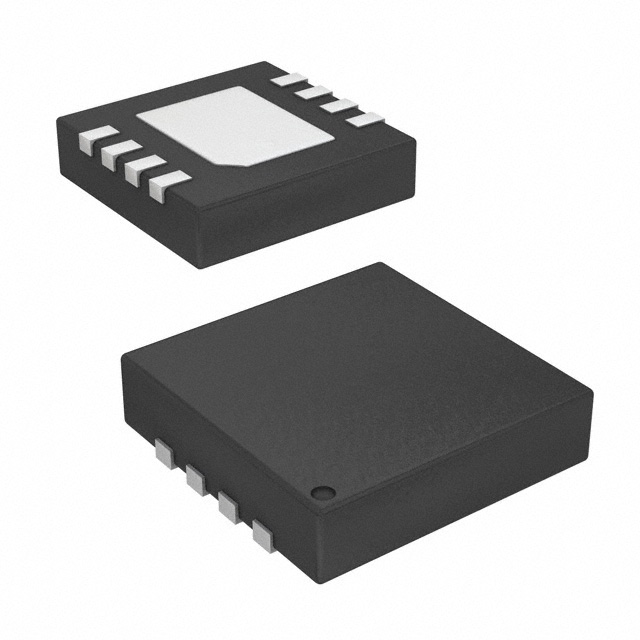
|
ISL96017UIRT8Z-TK | Intersil | IC XDCP 128-TAP 50KOHM 8-TDFN | - | -40°C ~ 85°C | - | Tape & Reel (TR) | - | - | - | 3 V ~ 3.6 V | - |

|
X9429WS16I-2.7 | Intersil | IC DIGITAL POT 10K 64TP 16SOIC | - | -40°C ~ 85°C | Selectable Address | Tube | - | - | - | 2.7 V ~ 5.5 V | - |

|
X9268US24Z-2.7T1 | Intersil | IC XDCP DUAL 256TAP 50K 24-SOIC | - | 0°C ~ 70°C | Selectable Address | Tape & Reel (TR) | - | - | - | ±2.7 V ~ 5.5 V | - |

|
ISL23418WFUZ | Intersil | IC DGTL POT 1CH 10K 10MSOP | - | -40°C ~ 125°C | - | Tube | - | - | - | 1.2 V ~ 5.5 V, 1.7 V ~ 5.5 V | - |

|
X9455WV24-2.7 | Intersil | IC DCP DUAL 10K 256TAP 24-TSSOP | - | 0°C ~ 70°C | Selectable Address | Tube | - | - | - | 2.7 V ~ 5.5 V | - |

|
ISL90460TIH527-TK | Intersil | IC XDCP 32-TAP 100KOHMS SOT23-5 | - | -40°C ~ 85°C | - | Tape & Reel (TR) | - | - | - | 2.7 V ~ 5.5 V | - |

|
X9260TS24T1 | Intersil | IC XDCP DUAL 256TAP 100K 24-SOIC | - | 0°C ~ 70°C | Selectable Address | Tape & Reel (TR) | - | - | - | ±5V | - |

|
ISL23445TFRZ-T7A | Intersil | IC DGTL POT QUAD 100K 20QFN | - | -40°C ~ 125°C | - | Original-Reel® | - | - | - | 1.2 V ~ 5.5 V, 1.7 V ~ 5.5 V | - |

|
X9429YS16I | Intersil | IC XDCP SGL 64-TAP 2.5K 16-SOIC | - | -40°C ~ 85°C | Selectable Address | Tube | - | - | - | 5V | - |

|
ISL23425UFRUZ-T7A | Intersil | IC DGTL POT DUAL 50K 16UTQFN | - | -40°C ~ 125°C | - | Cut Tape (CT) | - | - | - | 1.2 V ~ 5.5 V, 1.7 V ~ 5.5 V | - |
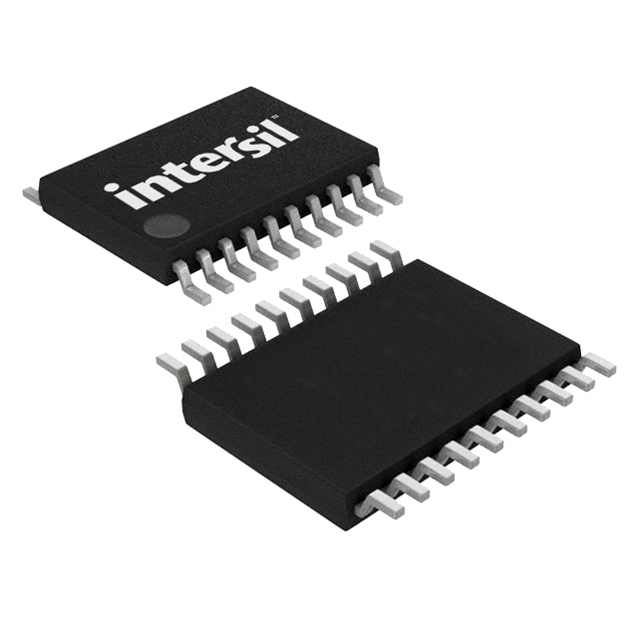
|
ISL22446WFV20Z-TK | Intersil | IC POT DGTL 128TP LN LP 20-TSSOP | - | -40°C ~ 125°C | - | Tape & Reel (TR) | - | - | - | 2.7 V ~ 5.5 V | - |

|
X9251US24I-2.7T1 | Intersil | IC XDCP QUAD 256TAP 50K 24-SOIC | - | -40°C ~ 85°C | Selectable Address | Tape & Reel (TR) | - | - | - | 2.7 V ~ 5.5 V | - |

|
ISL23315UFUZ-T7A | Intersil | IC DGTL POT 256POS 50K 10MSOP | - | -40°C ~ 125°C | Selectable Address | Tape & Reel (TR) | - | - | - | 1.2 V ~ 5.5 V, 1.7 V ~ 5.5 V | - |

|
X9421WS16T1 | Intersil | IC XDCP SGL 64-TAP 10K 16-SOIC | - | 0°C ~ 70°C | Selectable Address | Tape & Reel (TR) | - | - | - | 5V | - |

|
X9258TV24Z-2.7 | Intersil | IC XDCP QUAD 256TP 100K 24TSSOP | - | 0°C ~ 70°C | Selectable Address | Tube | - | - | - | ±2.7 V ~ 5.5 V | - |

|
X9429WS16IZ | Intersil | IC XDCP SGL 64-TAP 10K 16-SOIC | - | -40°C ~ 85°C | Selectable Address | Tube | - | - | - | 5V | - |

|
ISL90840WAV2027Z | Intersil | IC POT XDCP QUAD LN LP 20-TSSOP | - | -40°C ~ 105°C | Selectable Address | Tube | - | - | - | 2.7 V ~ 5.5 V | - |
Digital potentiometers, also known as digital potentiometer ICs or digital trimmers, are integrated circuits that emulate the behavior of traditional mechanical potentiometers in electronic circuits. They provide digitally controlled resistance adjustments and are used in applications such as volume controls, voltage regulation, and sensor calibration. Digital potentiometers offer advantages such as remote controllability, precision, and reliability compared to their mechanical counterparts.